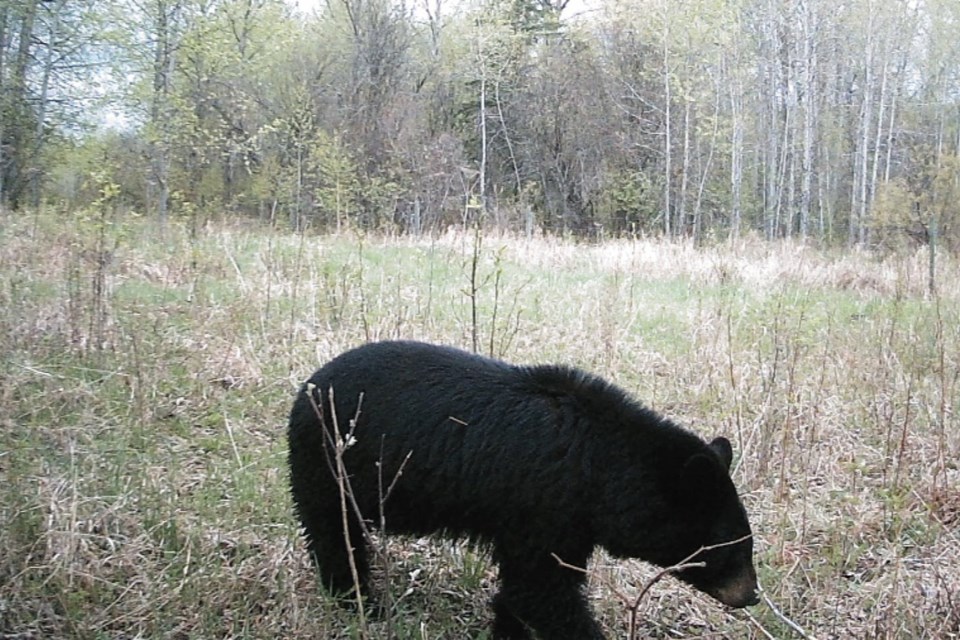LAKELAND – The summer months are a busy time in Alberta’s Lakeland region, with locals and visitors alike enjoying the outdoors, but sometimes people may find themselves running into bears – both in their natural habitat and closer to where humans live.
On June 8, Fish and Wildlife officers received a report of a bear in a green space at Lagasse Park in St. Paul, according to information from Calli Forbes, assistant communications director – Public Safety and Emergency Services, with the Government of Alberta.
“RCMP monitored the situation until the bear left the area,” says Forbes.
“In Alberta, human activities have become more frequent in bear territory. As a result, bear habitats have become more fragmented and encounters between bears and humans more common, but actual bear-human attacks are very rare,” states the information from Forbes.
Lagasse Park is located within the Town of St. Paul but along the northern edge of Upper Thérien Lake.
“Bears can be unpredictable and protective and may react aggressively if they sense any kind of threat to their cubs, food source or personal space, even if it's unintentional,” says Forbes.
Calls average to above average
Forbes says so far this year, the volume of bear-related calls received by Fish and Wildlife Enforcement Services (FWES) in the Lakeland region has been average to slightly above average.
“FWES continues to monitor bear activity and encourages the public to take steps to reduce attractants around homes and recreational areas,” says Forbes.
Fish and Wildlife Enforcement Services does not believe that recent weather conditions or smoke from wildfires have had a significant impact on the number of bear sightings or calls.
“However, there is potential for wildfires to displace bears from their natural habitats, which can lead to increased bear activity in nearby communities as they search for food,” she states.
Bear awareness is important
Kerry Kryvenchuk, an instructor in the Portage College Environmental Technologist program at the Lac La Biche campus and a bear awareness and safety expert, says more people in the forest equals more bear encounters.
“Generally speaking, we as humans are encroaching on the bears habitat, they are living there, and we interfere with their daily activities,” says Kryvenchuk.
Kryvenchuk explains that because bears are omnivores, these animals will eat anything from grass to meat. If a bear is getting human food from garbage, or being fed, they begin to associate humans with food.
When this occurs, they become problem bears. Problem bears, according to Kryvenchuk, usually get trapped and relocated, or shot.
“This is why people have to be vigilant about not leaving anything behind for a bear to eat,” he emphasizes.
Black bears, Kryvenchuk says, emerge from their dens in early spring and during this time of the year, they are intensely feeding to regain lost weight from winter.
“Black bears move a lot this time of the year, looking for food, water, and mates,” he says. Males can travel up to 50 kilometres during the mating season.
“June and July are peak mating months.”
When asked about precautions the public can take to keep safe, Kryvenchuk recommends travelling in groups, and make noises such as talking, singing, clapping, and breaking sticks.
Furthermore, people are advised to store food, garbage, toiletries, sunscreen, deodorant, and toothpaste in bear proof containers.
“Avoid hiking at dusk and dawn as these are when bears are active,” he adds.
Another helpful way to stay safe, according to Kryvenchuk, is to take a bear awareness course where students get to practice using deterrents. People are also advised not to wear the same clothes to bed that they have cooked, fished, or hunted in.
“Store these soiled clothes the same as food,” he says.



